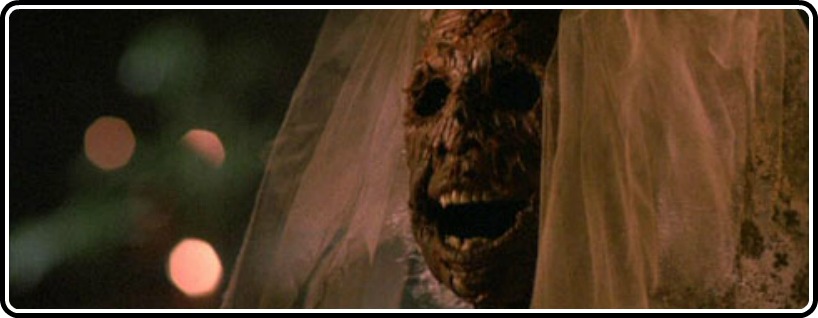Very few directors have become as synonymous with a genre as director Wes Craven has with the horror genre. A contemporary of equally influential names like Hooper and especially Carpenter, Craven’s name is as universally known in horror circles as his legendary films are revered in popular culture. Be it the counter-culture near-snuff picture that is The Last House On The Left or one of the world’s most popular horror franchises in The Nightmare On Elm Street, Craven once again re-invented himself, and the genre, with the groundbreaking masterpiece Scream, solidifying himself as one of the genre’s greatest filmmakers.
However, there is one stunning piece of his canon that has yet to be seen as the masterwork that it so rightfully should be described as.
Entitled The Serpent And The Rainbow, this brooding and deeply troubling thriller is a giant step out of Craven’s comfort zone, jumping from slasher picture fodder to the world of pagan worship and proto-zombie picture. The picture stars Bill Pulllman as a man named Dennis Alan, a researcher on the hunt for a powder that may induce zombification, allowing it to be used as the ideal anesthetic. Sent by a big pharmaceutical company, he’s paired with local clinic head, and her father, a local voodoo priest. Toss in an opposing voodoo master and some police hot on his trail, and while it may seem like a convoluted motion picture with more bombastic ideas than it can truly handle, it’s not only a deeply visceral and oddly structured gem of a horror/thriller, but it’s easily one of the most aesthetically intriguing pictures to ever come from the twisted mind of Wes Craven.
An adaptation of a groundbreaking book, of the same name, from writer Wade Davis, the film itself may be “based on a real story,” but it is very much a dreamlike and aesthetically hypnotizing feature film. Craven is at the very top of his game here, getting not only breathless design from art director David Brisbin and set decorator Rosemary Brandenburg, but some of the best photography ever given a film by cinematographer John Lindley. Deeply rooted in voodoo ritual and a raw energy that comes with its Haitian setting, the film finds Craven at his most experimental, which itself stands this film up as something to applaud.
I say it’s one of his most aesthetically experimental due entirely to the lyricism Craven brings to this film. Instead of crafting your standard slasher picture, he takes his frame off its hinges, and (particularly in the final act), turns the film into a near expressionistic masterpiece. There are shots of star Bill Pullman stumbling about an ever lively village that feature some of the most unforgettable frames Craven has ever shot, and some of his best, purely cinematic and visceral camera work to date. Craven’s film is deeply troubling, unflinching in its portrayal of the events here, with the filmmaker turning a rather influential bit of non-fiction into a fiction work that is as terrifying and breathtakingly atmospheric as anything he’s ever made.
However, it is not without a few Craven stamps. Intensely dreamlike in its aesthetic and, obviously, it’s narrative, the structure even gives way to this acting as some sort of dream, as much of the film is told through voice over, with Pullman’s voice over being the engine that drives this actual narrative forward. A film that would have made a name like Val Lewton jump for joy, this picture feels like, in many ways, an odd perversion of the expressionism found in a film like Edgar Ulmer’s Black Cat. With as much an off kilter structure and aesthetic as one could imagine given the frightening nature of the story, Craven’s picture is a truly effective bit of horror, something completely to the far left of anything he had done prior, or has done since.
Performance-wise, the film is solid. Again, almost hell bent on crafting a film where the narrative seems entirely superfluous to the atmosphere being crafted, Pullman is fine here as our lead, giving us just enough to sink our teeth into. However, if there is a weak link, it is the performances. None of the supporting turns are all that involving, with Pullman himself often being seen as nothing more than set dressing for this distilled, obtusely brooding motion picture.
However, calling it a flaw or a “weak link,” would be to misunderstand what Craven is going for here. While many of the performances here are serviceable and get the job done, this film is thrillingly visual-leaning. Frame after frame, the film is full of a kinetic sense of energy that it truly turns into an entirely effective aesthetic experiment by a massively influential horror auteur. Chock full of genuinely frightening moments, this is yet again proof that while he may be one of the most well known horror icons, very few are as underrated and overlooked as this master filmmaker.
With it being October, Criterion should take a hint. We want more horror in the Collection, and this would be a perfect start. Given a possibly similar release to the one given to Rosemary’s Baby, Criterion could get the cast and crew together for a long interview program, and ultimately dig into the real life back story of this shockingly engrossing tale. Toss in a new, beautiful restoration and transfer, and you’d have a film that would sound great, look even better, and be chock full of some of the best supplements around. Criterion, make this happen. For us.




![Bergman Island (The Criterion Collection) [Blu-ray]](https://criterioncast.com/wp-content/uploads/2022/11/bergman-island-the-criterion-collection-blu-ray-400x496.jpg)
![This Is Not a Burial, It’s a Resurrection (The Criterion Collection) [Blu-ray]](https://criterioncast.com/wp-content/uploads/2022/11/this-is-not-a-burial-its-a-resurrection-the-criterion-collection-blu-ray-400x496.jpg)
![Lars von Trier's Europe Trilogy (The Criterion Collection) [The Element of Crime/Epidemic/Europa] [Blu-ray]](https://criterioncast.com/wp-content/uploads/2022/11/lars-von-triers-europe-trilogy-the-criterion-collection-the-element-of-400x496.jpg)
![Imitation of Life (The Criterion Collection) [Blu-ray]](https://criterioncast.com/wp-content/uploads/2022/11/imitation-of-life-the-criterion-collection-blu-ray-400x496.jpg)
![The Adventures of Baron Munchausen (The Criterion Collection) [4K UHD]](https://criterioncast.com/wp-content/uploads/2022/11/the-adventures-of-baron-munchausen-the-criterion-collection-4k-uhd-400x496.jpg)
![Cooley High [Criterion Collection] [Blu-ray] [1975]](https://criterioncast.com/wp-content/uploads/2022/11/cooley-high-criterion-collection-blu-ray-1975-400x496.jpg)